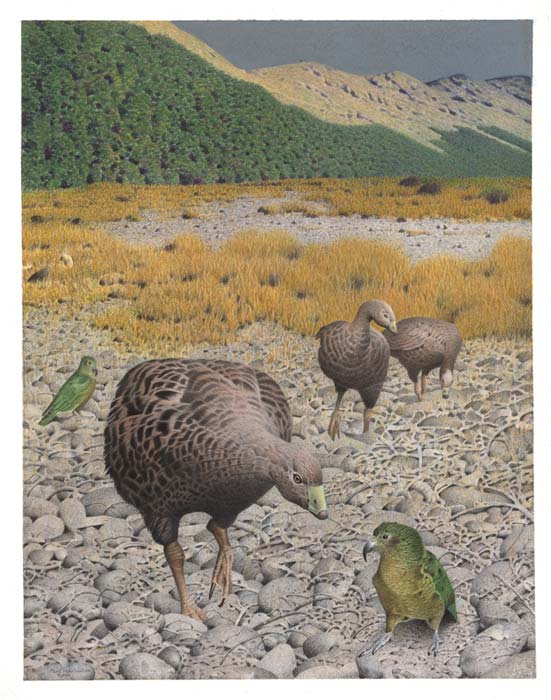
Evidence from fossil bones shows that giant flightless geese (Cnemiornis calcitrans) once roamed South Island grasslands, as illustrated in this painting. They stood about 70 centimetres tall, similar in size to the smallest moa.
Goose bones have been found in some of the oldest human middens (ancient rubbish sites), and extinction is thought to have been caused by early human hunting.
Te whakamahi i tēnei tūemi
Museum of New Zealand Te Papa Tongarewa
Artwork by Paul Martinson
Permission of the Museum of New Zealand Te Papa Tongarewa must be obtained before any re-use of this image.







Tāpiritia te tākupu hou